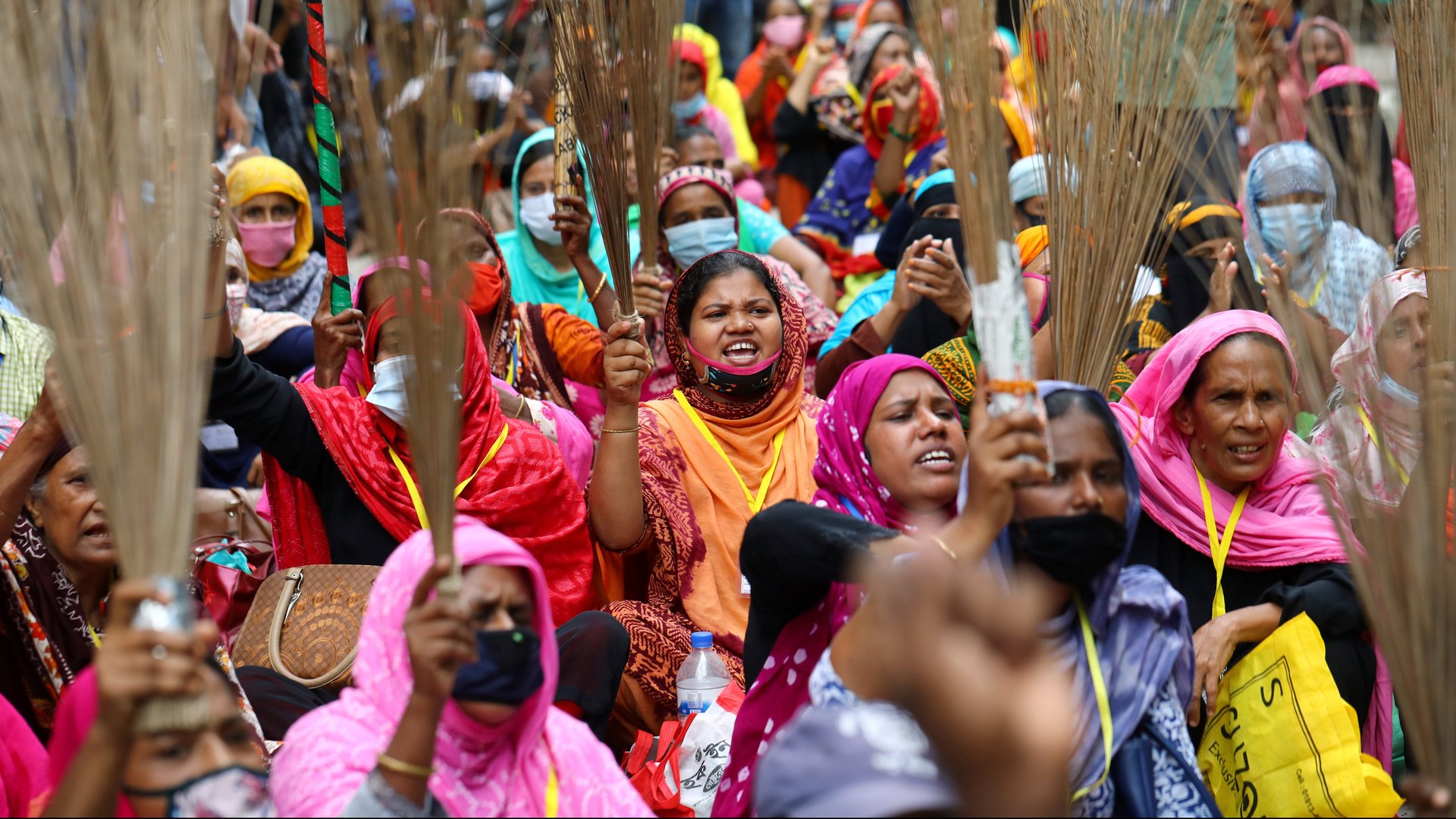Garment workers are starving
The pandemic has put pressure on the entire fashion industry, but it’s the low-wage workers in its supply chain who are suffering the harshest consequences.


The pandemic has put pressure on the entire fashion industry, but it’s the low-wage workers in its supply chain who are suffering the harshest consequences.
Many are literally going hungry, according to a survey (pdf) of 396 workers by Worker Rights Consortium (WRC), an independent labor-rights watchdog, and Genevieve LeBaron, a professor of politics at the UK’s University of Sheffield.
Since the pandemic began, 77% of the respondents said they or a member of their household had gone hungry, and 20% said they had experienced hunger on a daily basis. Many reported having to buy less meat and vegetables, reducing the nutritional quality of their meals as well.
The report included quotes from respondents. One who lost her job said she and her family have had to skip breakfast every day for two months. Others described having to cut items such as chicken and fish from their diet, or subsisting on rice soup. Most surveyed had taken on debt or borrowed money to be able to buy food, and 80% said they will have to cut back on food for themselves and their families further if the situation doesn’t improve.
The pandemic has been especially hard on low-wage workers across a range of industries. A recent report by the International Labour Organization (ILO) found Covid-19 had driven down wages in most of the countries with available data, but it disproportionately affected lower-paid workers, as opposed to those in higher-paying managerial and professional jobs.
In developing countries, these workers may have little savings or any kind of safety net to rely on in an emergency. If their income abruptly falls, they can find themselves having to sacrifice basic necessities, including food.
The garment workers surveyed by WRC were located in countries such as Myanmar, Bangladesh, Indonesia, El Salvador, Ethiopia, and India. Many lost their jobs or had their hours reduced in the fallout from Covid-19 as fashion companies canceled or suspended orders for new clothes in large numbers. Even as companies have resumed buying, many have sought discounts on their orders, contributing to downward pressure on worker wages even though fashion brands don’t directly set factory wages themselves.
Between January and September, for instance, the price of clothing exported from Bangladesh—the world’s second largest garment exporter after China—declined 2.1% compared to the previous year. Garment workers in the country have also reported substantial drops in wages.
In the WRC report, the average take-home pay of workers surveyed before the pandemic was $187 per month. By August, it had dropped to $147 per month, a 21% decrease.
The survey also asked workers to identify which companies they had recently sewn products for. The most common answers included Adidas, Gap, H&M, Nike, Walmart, Express, and others.
The report suggests the issue goes far beyond the workers they spoke with directly: “Because our study found stable patterns across different types of brands who collectively shape the working conditions for vast swathes of the global garment supply chain, and because it included different types of garment producing countries, there are grounds for concern that growing hunger and food insecurity levels are emerging as an endemic pattern across the global garment supply chain.”